

OMAN
Peaceful. Hospitable. Genuine.
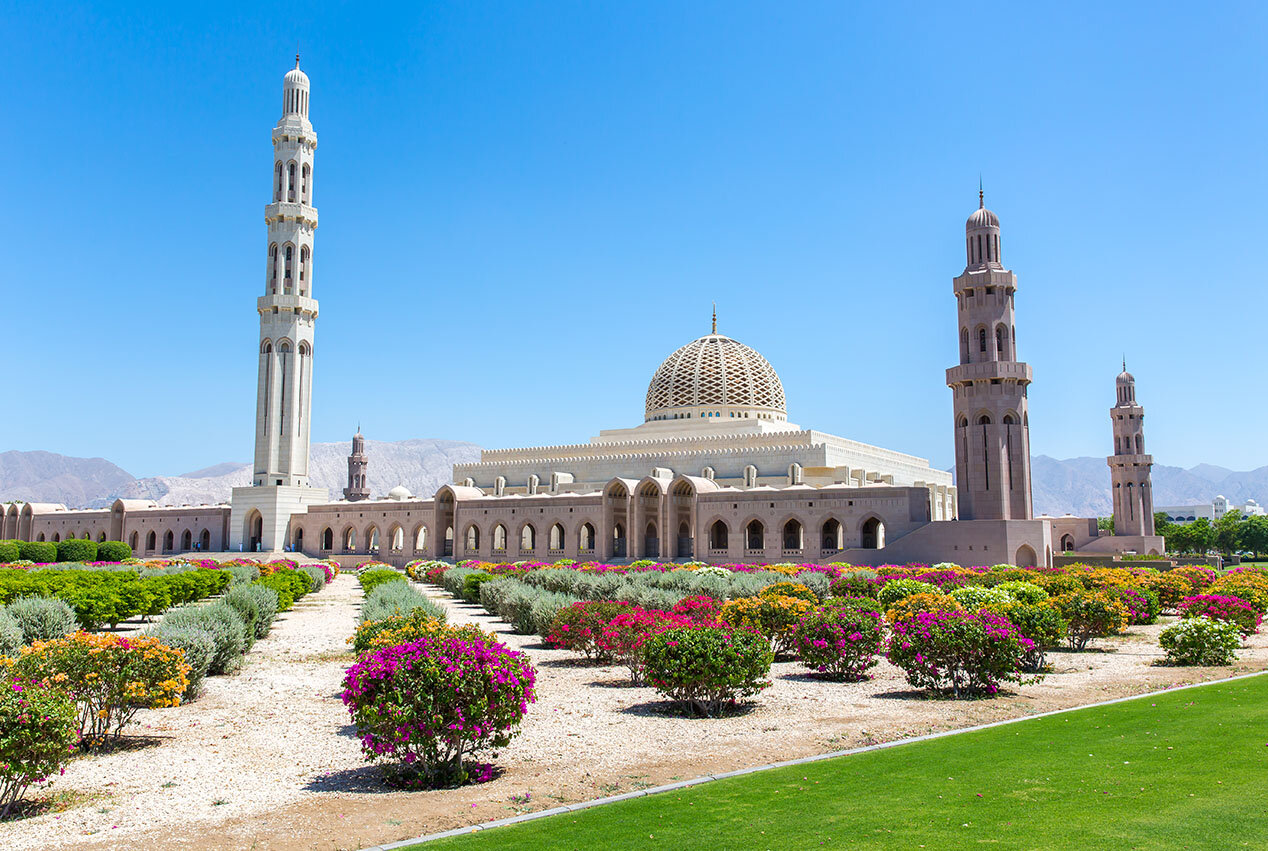
SULTAN QABOOS GRAND MOSQUE
An example of intricate and contemporary Islamic architecture, this religious landmark presents a modern exterior with an interior featuring an awe inspiring traditional main prayer hall. The handmade carpets, priceless chandeliers, mosaic-covered walls and gravity defying vaulted ceilings of the great dome astonishing to behold. Your visit to the mosque includes the opportunity to discuss Islamic history with an Omani scholar. This site alone is worth the trip. Please note that Islamic dress code must be observed.
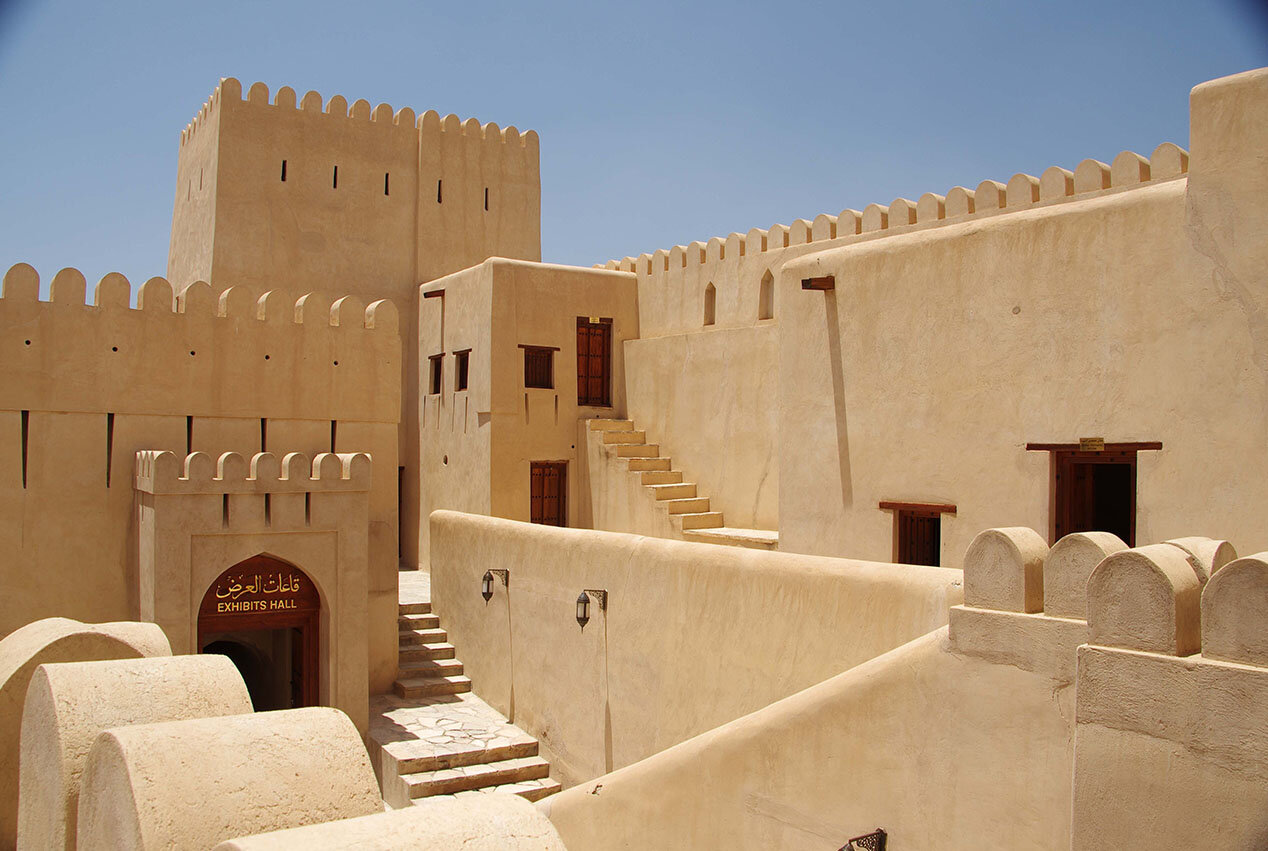
NIZWA FORT
Nizwa, considered the birthplace of Islam, is an ancient city in the Ad Dakhiliyah region of northern Oman. Situated on flat plains with palm plantations and seasonal rivers, this storied city is known for Nizwa Fort, a 17th century castle with a lofty cylindrical tower positioned as defense of a trade route through the city. Strategically located over underground streams, the fort’s configuration made it challenging for enemies to lay military siege.
Nizwa Souk, located near Nizwa Fort, features handicraft stalls and silversmiths renowned for producing brilliant silver jewelry, some of which is considered the best in the region. Craftsmen are also skilled in producing khanjar (a curved dagger) as well as copper ware, coffee pots, swords, leather goods and pottery. Be sure not to miss the cattle auction held on Fridays.
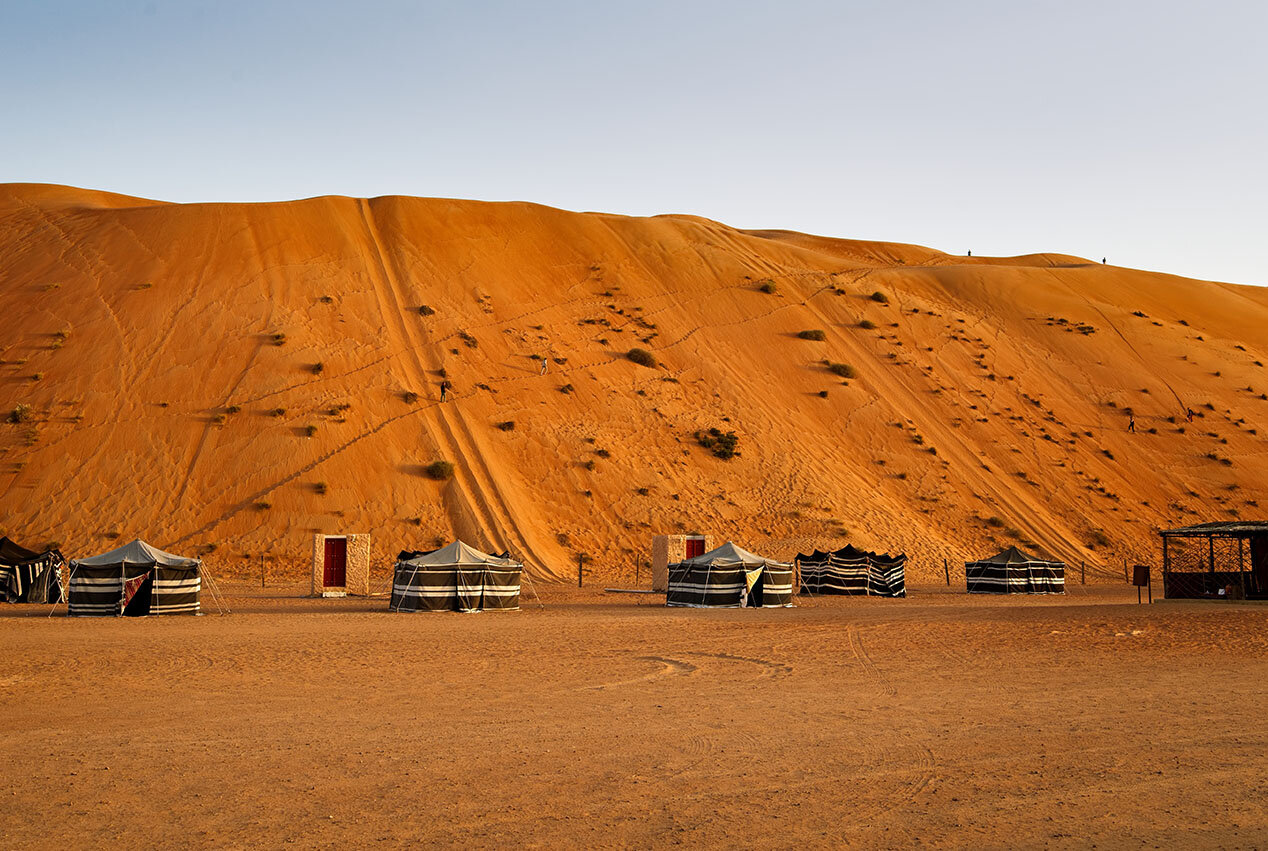
WAHIBA SANDS - CAMPING EXPERIENCE
Rising up well over 600 feet above sea level, the Wahiba Sands mystifies with its unique patterns, colors and unexpected flora and fauna. These sand dunes are a 3-hour drive from Nizwa or a 4-hour drive from Muscat. Once you arrive, you’ll continue your trek in a 4WD vehicle through the sand dunes to a luxury tented campsite for a night where you’ll enjoy Bedouin hospitality and dinner before turning in under a canopy of stars.
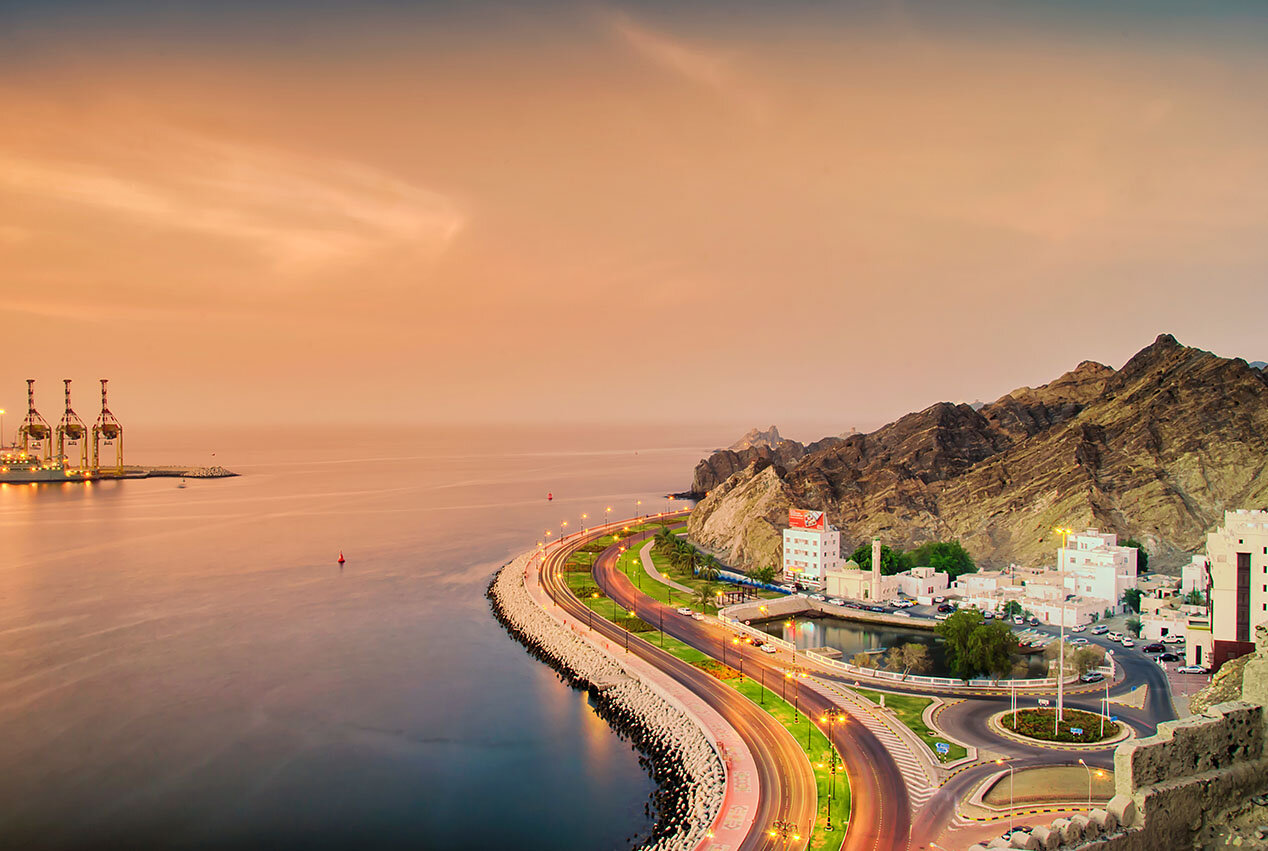
MUTRAH CORNICHE – WALKING TOUR
The ancient path from Muscat to Mutrah will transport you back in time. From Riyam, the tour ascends into the foothills of the Al Hajar mountains while soaking in beautiful views of the city and the Gulf of Oman. You’ll pass through an abandoned village, witness pools of water which transform the countryside from grays and reds to greens and blues, and have the opportunity to spot local wildlife. In Mutrah, you’ll behold one of the oldest traditional souk and fish markets in the Arab world where you’ll be able to stroll the narrow, ancient and colorful alleyways and test your haggling skills while purchasing aromatic spices, lustrous gold and handicrafts.
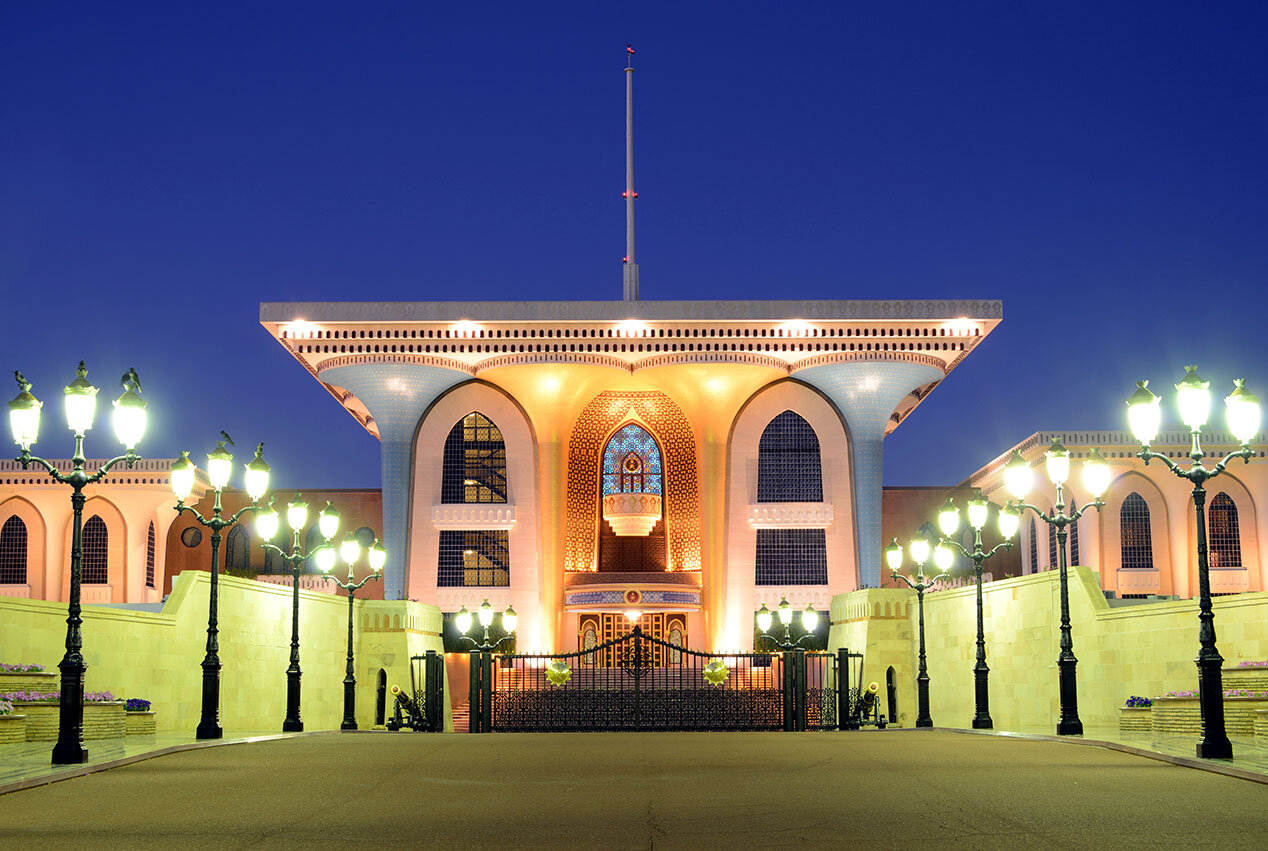
AL ALAM PALACE
Overlooking the beautiful Gulf of Oman, you’ll find His Majesty Sultan Qaboos’s magnificent Al Alam Palace (Flag Palace) flanked by the 16th century Portuguese forts, Mirani and Jalali. While the sultan generally lives in a different residence, a flag flying at Al Alam Palace indicates that the sultan is present. A contemporary example of Islamic architecture in design, the palace is surrounded by beautifully manicured flowerbeds and gardens. The interior is not open for public viewing, but the outside is still worth the trip.
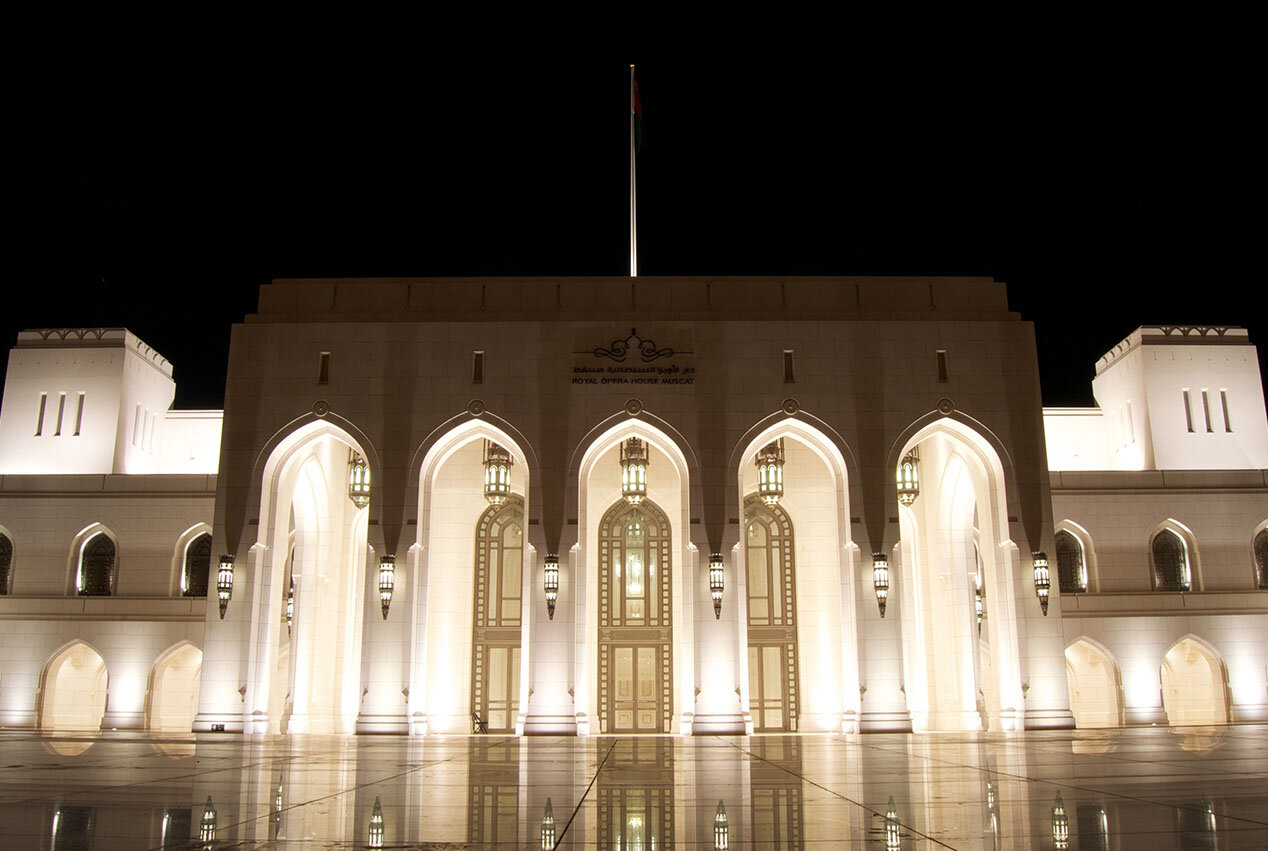
ROYAL OPERA HOUSE
After experiencing the Royal Opera House Muscat in the Shai Al Qurum area of Muscat, you’ll understand why it is considered a standard of excellence in performing arts. The architectural secrets of this bold edifice, with it’s technical innovation, breath-taking decorative motifs, derived from Islamic, Mughal, Oriental and European art, is worth exploring. The structure simultaneously stunning and intricately delicate in design.
The nearby Opera Galleria presents an abundance of shopping opportunities centered around artisanal shops, fashion and clothing shops, jewelry boutiques and perfume purveyors. The Royal Opera House Muscat’s commitment to local talent and traditional crafts ensure availability of products with exceptional quality that are made by Omani craftspeople from across the sultanate.
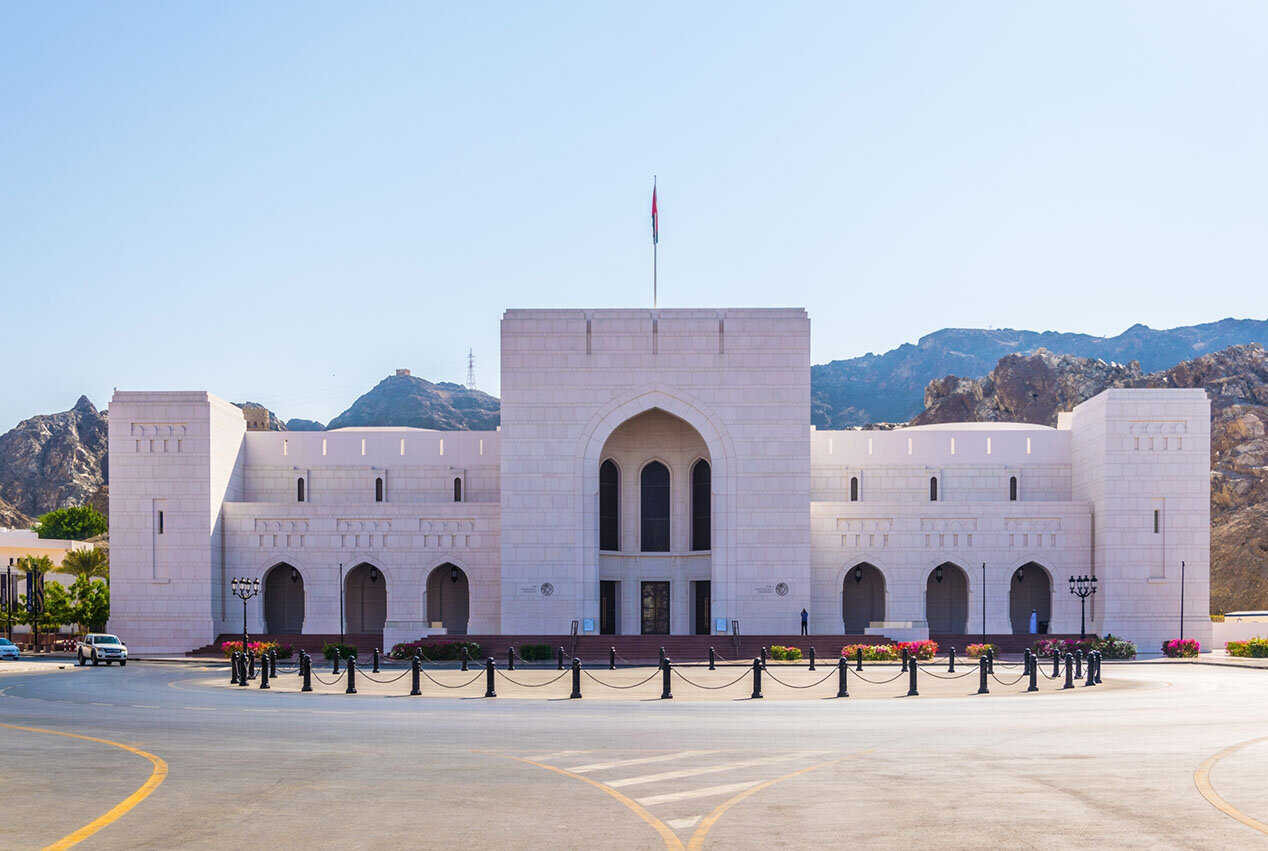
NATIONAL MUSEUM
The National Museum of the Sultanate of Oman features well over 5,000 artifacts and treasures that range from the first human settlers in Oman to the present day. The sprawling museum contains the Maritime History Hall, Hall of Oman and the Outside World, Hall of Islam, Hall of Earth and Hall of Man. The on-site learning center and open storage of artifacts also provides visitors with the opportunity to learn first-hand about the process of preparing artifacts for display.
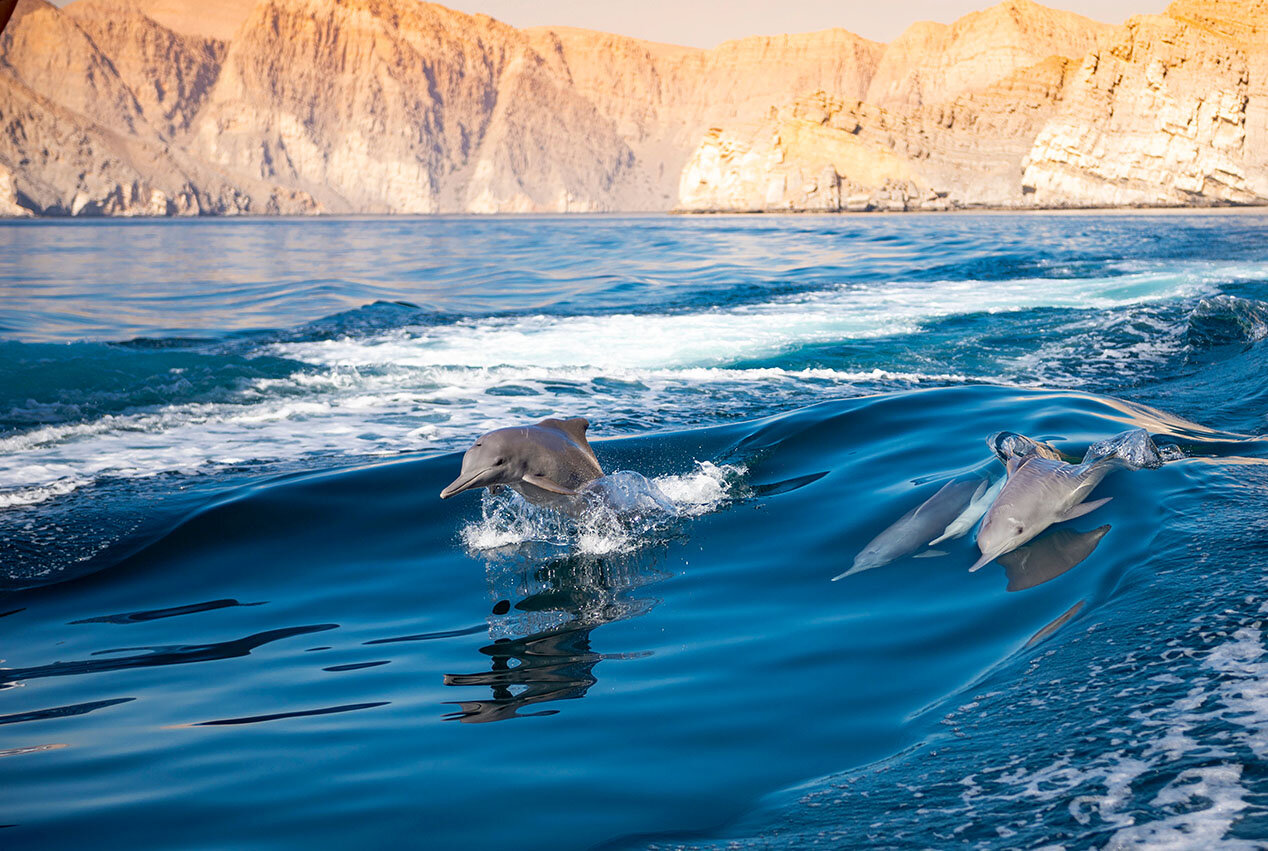
DOLPHIN WATCHING
Watching wild dolphins early in the morning in the Gulf of Oman is an exceptional way to start the day. Slicing through the clear waters of the gulf, dolphins will often jump up to 9 feet into the air. You may also have the opportunity to catch a turtle or whale sighting. This activity is perfect as part of a half-day tour of the coastline, followed by a swim in the bay and a picnic.
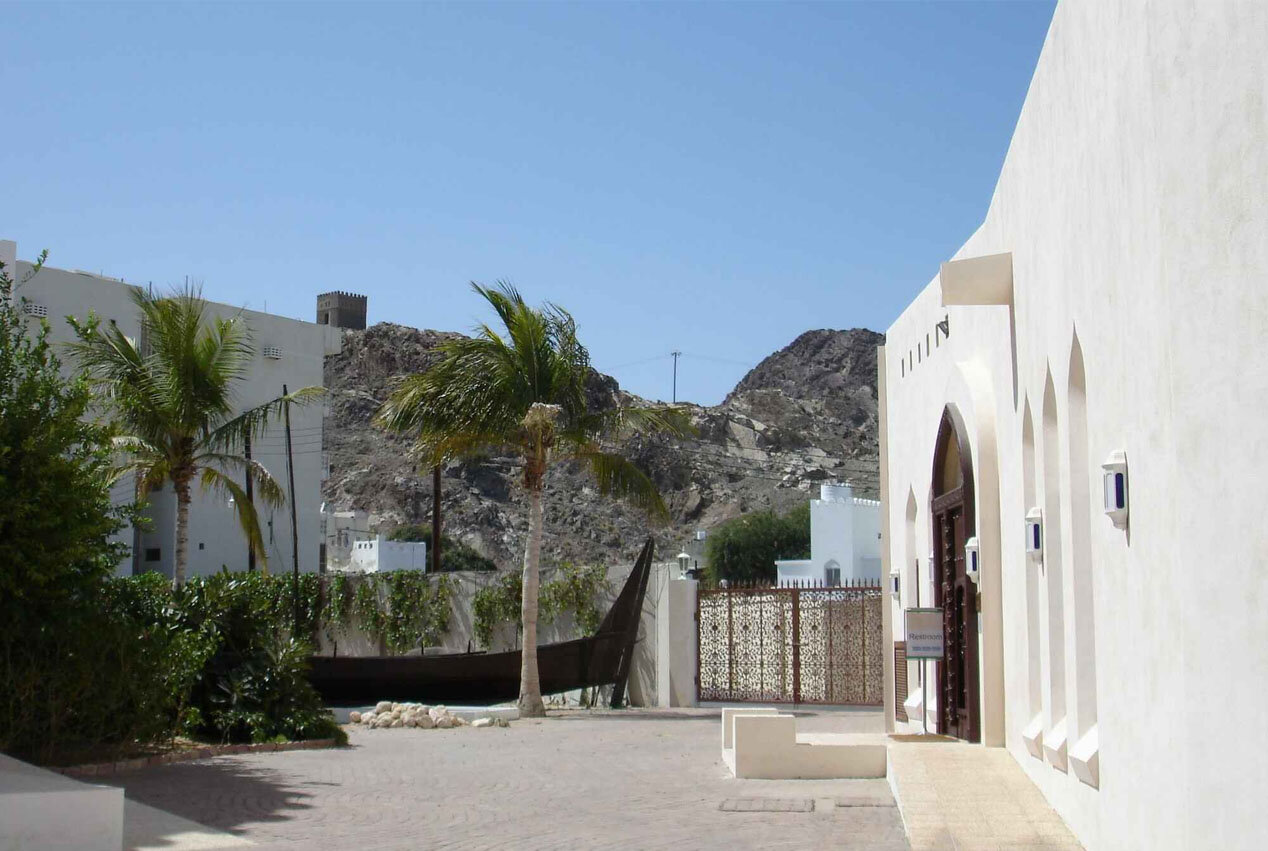
BAIT AL ZUBAIR MUSEUM
Situated in Old Muscat, this small museum provides a general overview of Omani culture, history and development through a private collection of stamps, weapons, costumes and household tools. Adjacent to the museum you’ll find an authentic village and souq. This is an ideal stop for those with limited time in the sultanate. The museum is closed on Fridays.
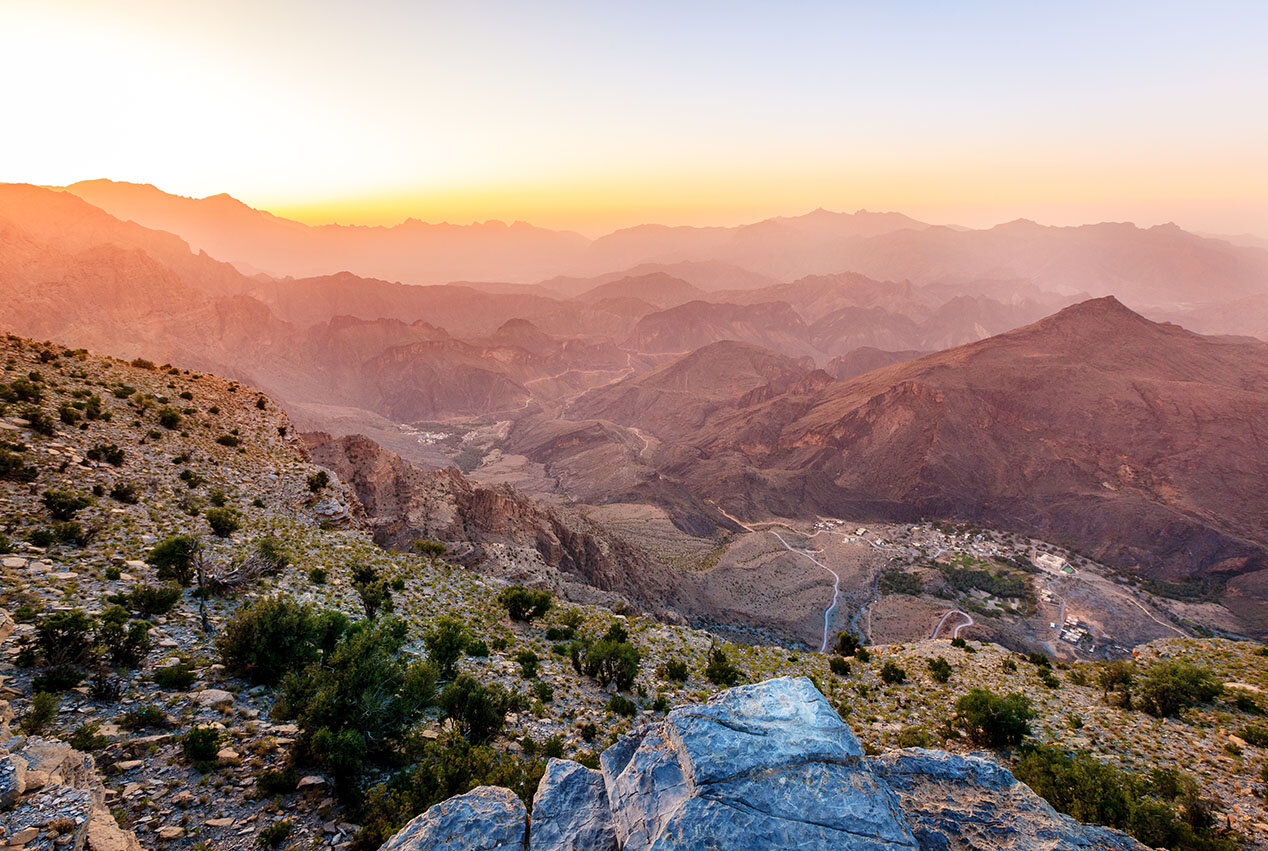
AL HAJAR MOUNTAINS
By staying near the Saiq Plateau, you’ll enjoy access to day hikes that bring you to local villages while surrounded by scenic summits and gorges. The Mediterranean climate contributes to a landscape of many unique fruits, walnuts, pomegranates and Oman’s famed damask roses which canvas the mountain-side in varying shades of pink from March to May. A stroll through rose terraces is a memorable experience. Harvested roses are used to make Omani rose water, a staple in virtually all Omani households as it’s commonly used as a culinary flavoring, fragrance and medicinal remedy.
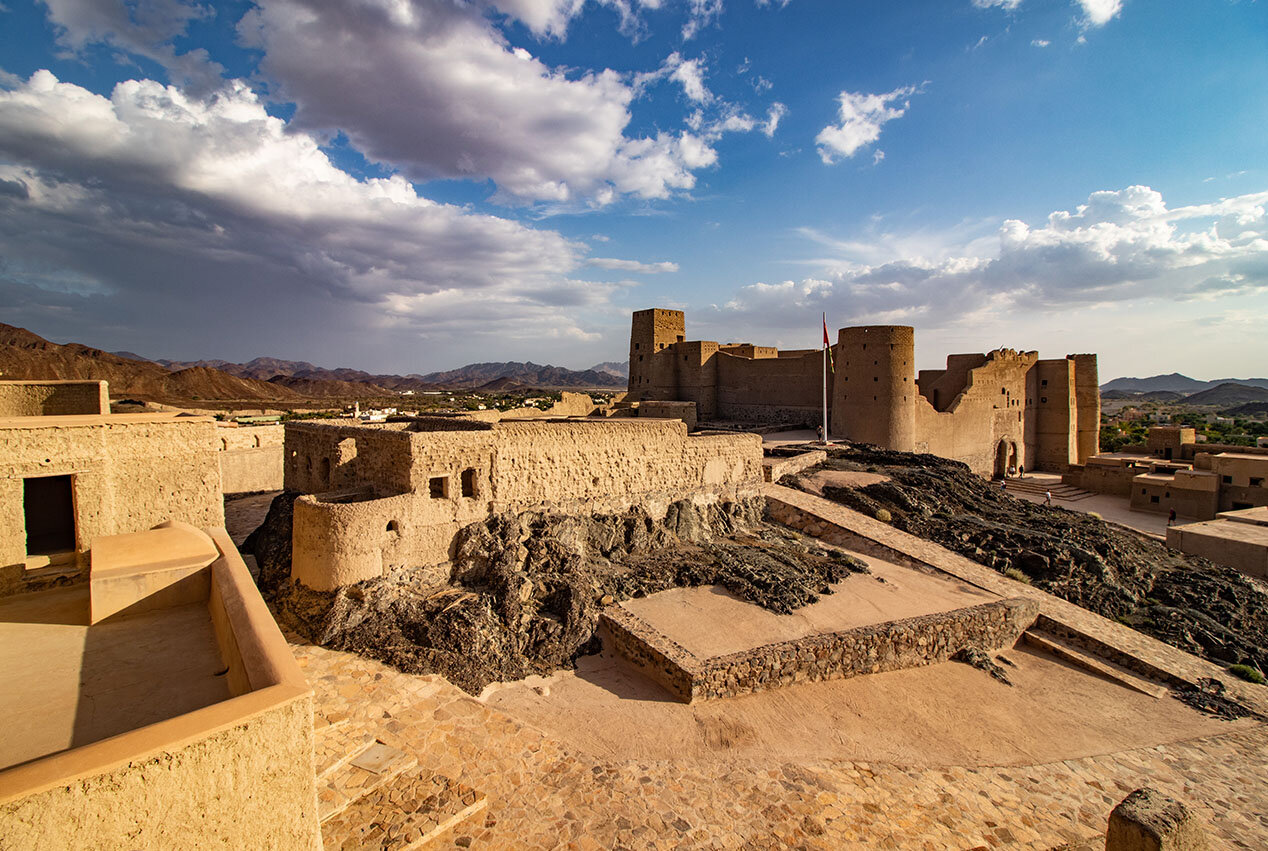
BAHLA
The 12th century town of Bahla is a UNESCO World Heritage site, and for good reason. If you ever wanted to get lost in another place and time, Bahla is the destination for you! Its perimeter is defined by an ancient, winding wall. Bahla is renowned for pottery and the Bahla Fort, the only Omani structure of its kind listed on the UNESCO World Heritage list. The fort complex sprawls over 8 miles and includes a citadel oasis which is always green, even in the driest of months. The sand and mud construction of the fort is reminiscent of elaborate sand castles.
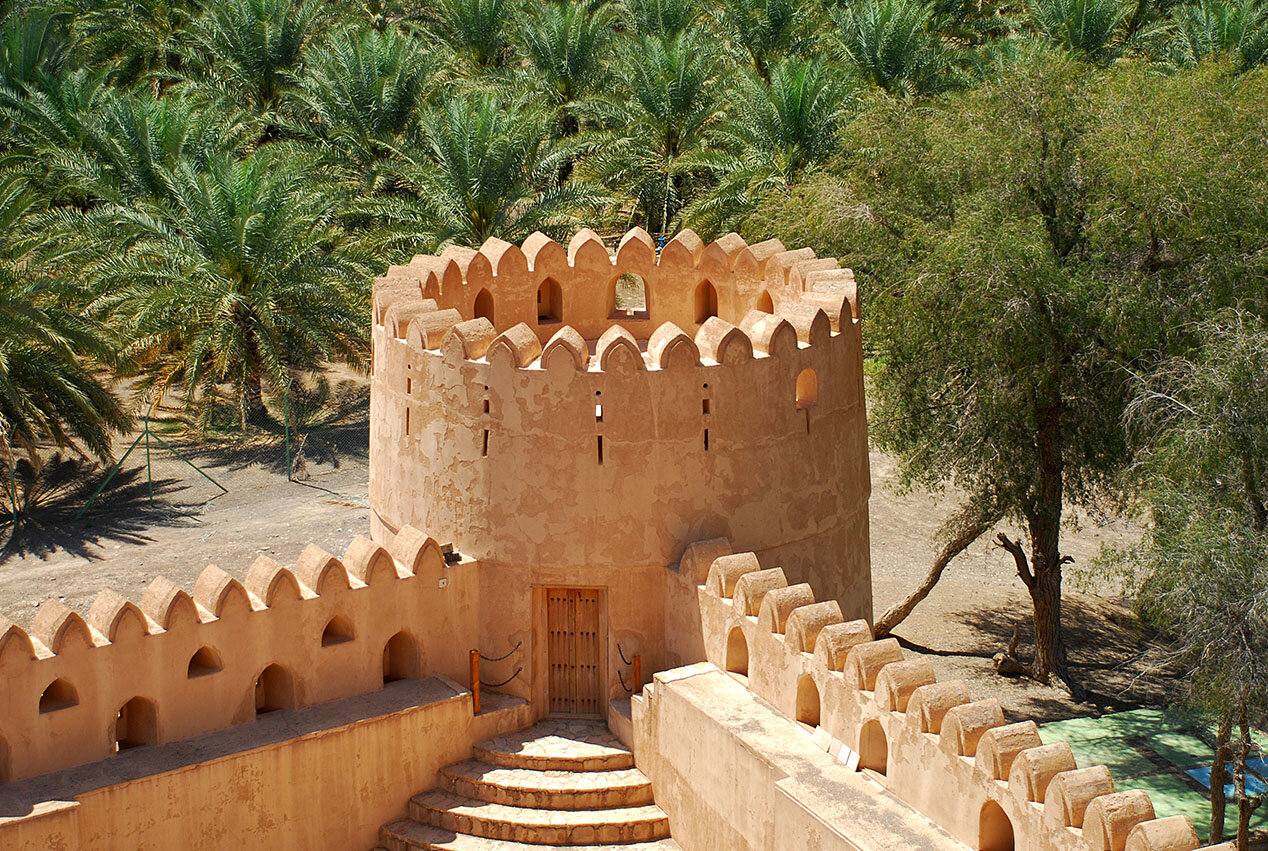
JABRIN CASTLE
Jabrin Castle, built during the mid-17th century Al Ya’ruba dynasty, is one of Oman’s best-preserved castles. Located just 12 miles outside Bahla, Jabrin Castle became a center of education for medicine, law and astrology. Most notably, the castle features stunning Omani ceiling painting and beautifully executed woodcarvings. Of special note is the sun and moon hall and the exquisite calligraphy adorning the walls. What originated as a functional garrison for soldiers evolved into a treasured work of art and fine example of Omani architecture. The views from the top are especially exquisite.
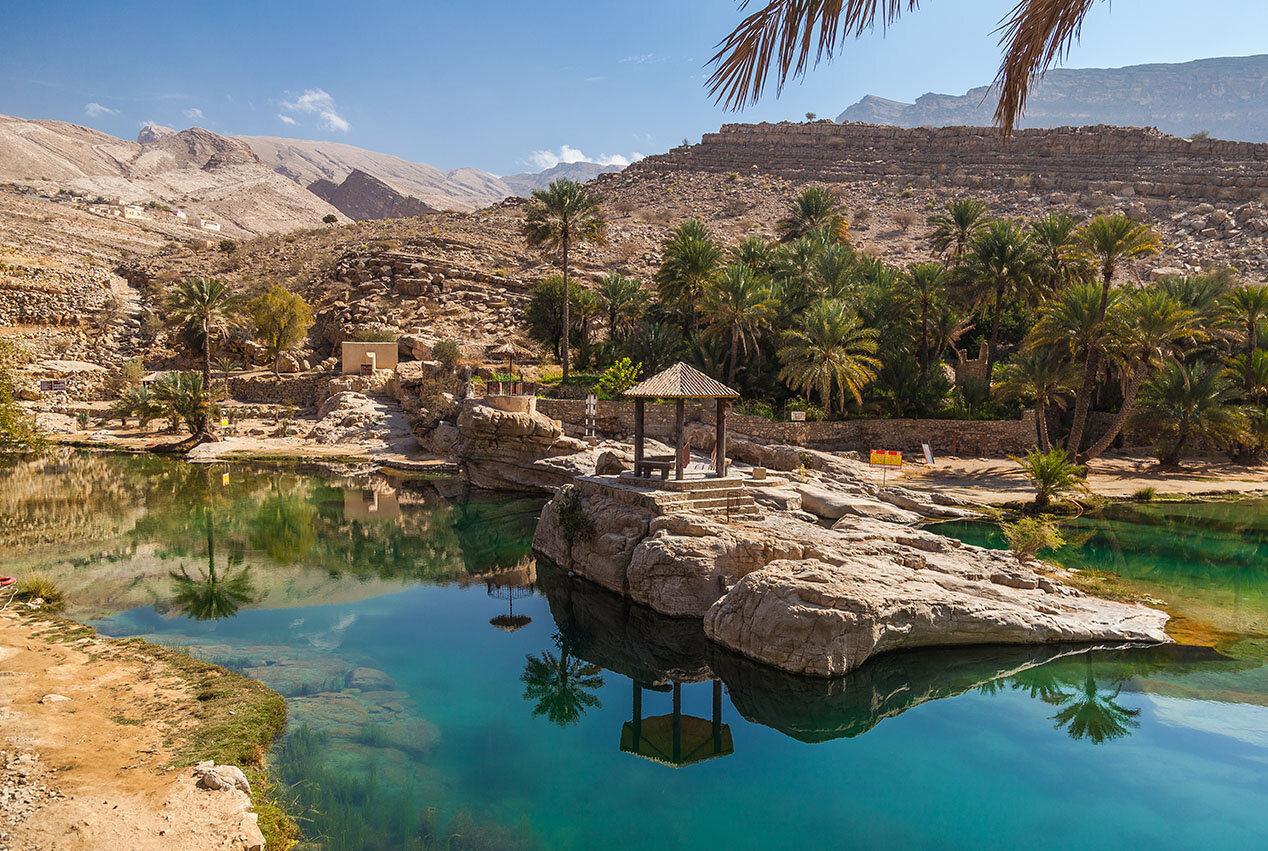
WADI BANI KHALID – DESERT OASIS
At Wadi Bani Khalid, you’ll find a clear blue oasis in the heart of Oman’s desert. A trip to Wadi Bani Khalid will bring you through the Al Hajar Mountains, along the east coast of the country. You’ll pass through spectacular scenery with colorful rock formations, green with copper oxide and red from iron ore. Surrounding the oasis are traditional Omani dotted along the mountainside. Wadi Bani Khalid is a 3-hour drive from Muscat and requires an early start. An ideal setting for a swim or for watching locals jump from the cliffs into the crystal clear water.
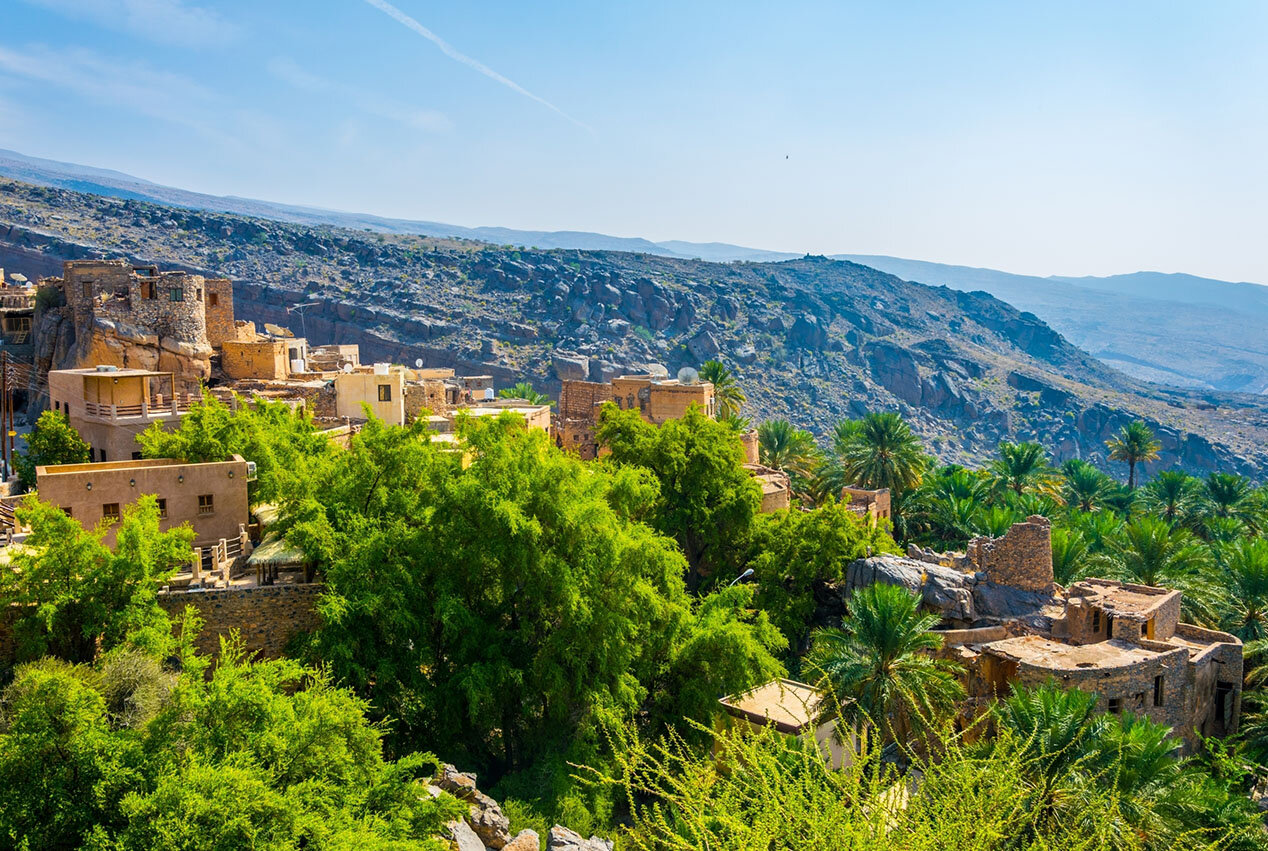
MISFAT AL ABRIYEEN
One of the oldest and visually-impressive mud settlements in Oman, Misfat Al Abriyeen transports you back in time. You’ll be welcomed by villagers whose ancestors built their domiciles in the hillsides. Dressing conservatively (as you would during a mosque visit) is essential to experiencing a warm welcome from the locals. Misfat Al Abriyeen, which translates as “green mountain”, is fitting given the lush date and banana groves that surround the area. Close by, you’ll find the 2-million year-old Al Hoota Cave which is open to the public. There are quaint villages in the area worth a visit. We recommend staying at luxury accommodation in the area for quick access to these sites and activities.
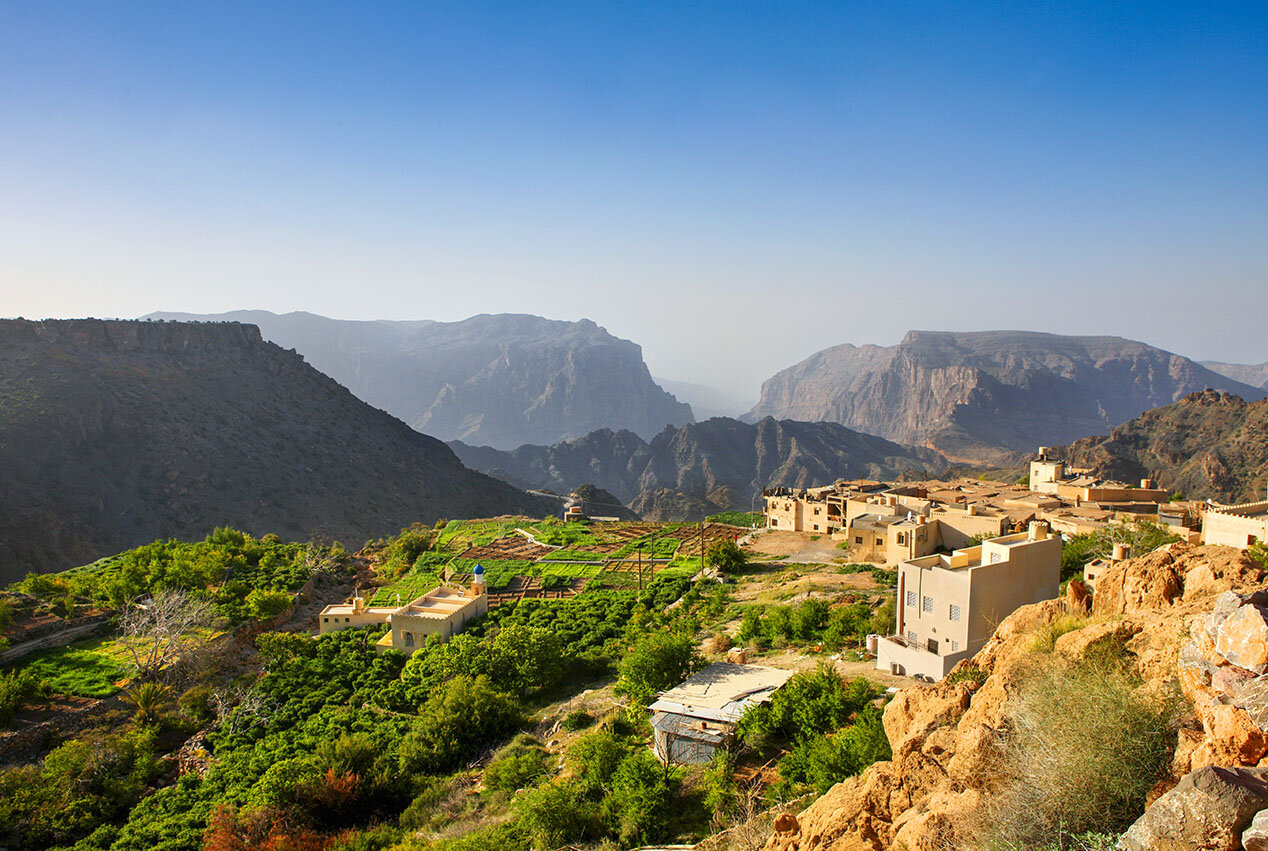
AL JEBEL AL AKHDAR
Al Jebel Al Akhdar’s stunning fruit orchard terraces grace the slopes of the Al Hajar mountain range. Natural springs are fed to the terraces through aflaj, an ingenious 6th century ancient irrigation system and another of Oman’s UNESCO World Heritage attractions. The nearby Saiq, Wadi Bani Habib and Al Ain villages overlook expansive vistas that include summits, gorges and canyons. Al Jebel Al Akhdar is also noted for its rose water production, an important ingredient in Middle Eastern food, flavor and perfume. Hiking in the area will lead you through four mountain villages along ancient foot paths while skirting the aflaj irrigation channels. A visit to Al Jebel Al Akhdar is a great way to experience traditional village life.
sign up for our
Newsletter
Stay current with all the latest being offered from ATJ, as
well as updates on Asia Destinations.



















